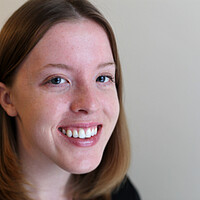Presidential praise for Iranian math prize winner (with and without head scarf)
Maryam Mirzakhani has become the first woman – and the first Iranian – to win the prestigious Fields Medal in mathematics. And South Korea’s first female president had the honor of handing out the prize.
Ms. Mirzakhani was awarded the prize for her “contributions to the dynamics and geometry of Riemann surfaces and their moduli spaces,” which examine the symmetry of curved surfaces. Her work is primarily theoretical, but may have implications for physics and quantum field theory.
“This is a great honor. I will be happy if it encourages young female scientists and mathematicians,” Mirzakhani said in a statement released by Stanford University, where she is a professor. “I am sure there will be many more women winning this kind of award in coming years.”
Mirzakhani was born and raised in Tehran. Iranian President Hassan Rouhani tweeted congratulations today to Mirzakhani using two photos – one showing her with a head scarf and one without.
Inside Iran, the news was widely reported on blogs and official and private news websites with pride. News reports by state affiliated agencies provided detailed biographies for Mirzakhani, referring to her as a “prominent mathematician.” The semi-official Mehr News Agency called the award the “Nobel Prize” for mathematics. Iran’s Press TV ran a segment on Mirzakhani labeling her a “Genius Iranian.”
The website for Iran’s state IRIB broadcaster and the official IRNA state news agency website both featured Mirzakhani’s photo prominently on their main page, and reported Mr. Rouhani’s congratulatory message in full.
"Today, all Iranians can be proud that the first woman to win the Fields award is their compatriot," Rouhani said. "All Iranians throughout the world are national assets for this country, and as the representative of the Iranian people, I pay my respects to your scientific endeavors. I hope your life is filled with happiness and success.”
When Shirin Ebadi won the Nobel Peace Prize in 2003 – another first for Iran – for promoting the rights of women and children, the reception at home was very different. The government waited several days to comment on her win, and she was dogged with accusations from hardliners that she served the interests of the West.
Challenges for women in mathematics
The Fields Medals are awarded every four years to mathematicians 40 years old or younger, and recognize achievement in mathematics as well as the promise of future outstanding work. Mirzakhani is 37. The award is worth $13,700 (US). The upward age limit placed on the award has been criticized in the past for being unfair to women who raise families during what are considered to be prime research years.
Mirzakhani, who is married with a young daughter, commented on the of role women in mathematics in remarks to the American Mathematical Society last year.
In my opinion, the situation of women in math is far from ideal. The social barriers for girls who are interested in mathematical sciences might not be lower now than they were when I grew up. And balancing career and family remains a big challenge. It makes most women face difficult decisions which usually compromise their work. However, there has been a lot of progress over the years, and I am sure this trend will continue.
Mirzakhani earned her Bachelor's degree from Sharif University of Technology in Tehran before leaving her homeland to pursue her doctorate at Harvard University. She has been a professor at Stanford University in California since 2008.
As a child, Mirzakhani wasn’t initially drawn to mathematics and instead thought of becoming a writer. With help from a female principal who arranged for problem-solving classes in high school, Mirzakhani’s interest in math grew and she won gold medals in 1994 and 1995 at the International Math Olympiad, finishing with a perfect score in 1995. The Iranian team hadn’t had a female member before her -- an important first that has now led to an even bigger one.
A freelance writer contributed to this report.







